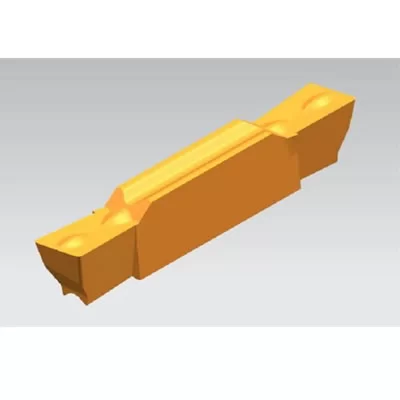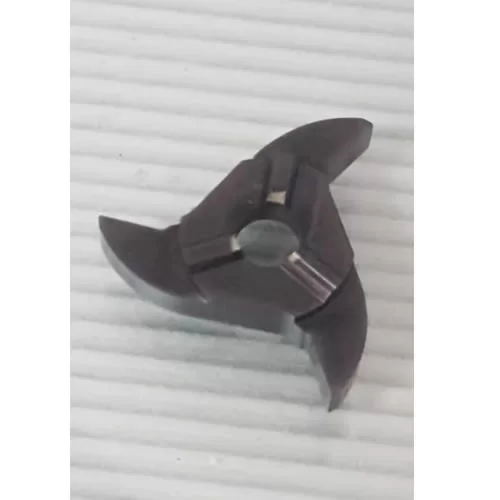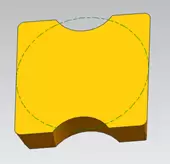Milling Cutter Basics
Milling cutter basics
What is a milling cutter?
From a professional point of view, a milling cutter is a cutting tool used for milling. It can rotate and has one or more cutting teeth. During the milling process, each tooth cuts the workpiece allowance intermittently. It is mainly used in machining planes, steps, grooves, forming surfaces and cutting workpieces on milling machines. A narrow land is formed on the flank to form a relief angle, and its life is higher due to the reasonable cutting angle. The back of the pitch milling cutter has three forms: straight line, curve and fold line. Linear backs are often used for fine-toothed finishing cutters. Curves and creases have better teeth strength and can withstand heavy cutting loads, and are often used for coarse-tooth milling cutters.
What are the common milling cutters?
Cylindrical milling cutter: used for machining planes on horizontal milling machines. The teeth are distributed on the circumference of the milling cutter and are divided into straight teeth and spiral teeth according to the tooth shape. According to the number of teeth, there are two kinds of coarse teeth and fine teeth. Spiral tooth coarse-tooth milling cutter has few teeth, high tooth strength, large chip space, suitable for rough machining; fine-tooth milling cutter is suitable for finishing;
Face milling cutter: used for vertical milling machines, face milling machines or gantry milling machines. The plane end faces and the circumferences have teeth and coarse teeth and fine teeth. The structure has three types: integral type, insert type and indexable type;
End mill: used to machine grooves and step surfaces. The teeth are on the circumference and end faces. They cannot be fed in the axial direction during operation. When the end mill has an end tooth passing through the center, it can be axially fed;
Three-sided edge milling cutter: used to machine various grooves and step faces with teeth on both sides and circumference;
Angle milling cutter: used to mill a groove at an angle, both single-angle and double-angle milling cutters;
Saw blade milling cutter: used to machine deep grooves and cut workpieces with more teeth on the circumference. In order to reduce the friction angle of the cutter, there are 15'~1° secondary declination on both sides. In addition, there are keyway milling cutters, dovetail milling cutters, T-slot milling cutters and various forming cutters.
What are the requirements for the manufacturing material of the cutting part of the milling cutter?
Common materials for manufacturing milling cutters include high-speed tool steels, hard alloys such as tungsten-cobalt and titanium-cobalt-based hard alloys. Of course, there are some special metal materials that can also be used to make milling cutters. Usually, these metal materials Has the following properties:
1) Good process performance: forging, processing and sharpening are relatively easy;
2) High hardness and wear resistance: At normal temperature, the cutting part must have sufficient hardness to cut into the workpiece; it has high wear resistance, the tool does not wear and prolongs the service life;
3) Good heat resistance: the tool will generate a lot of heat during the cutting process, especially when the cutting speed is high, the temperature will be very high. Therefore, the tool material should have good heat resistance, even at high temperatures. It can maintain high hardness and has the ability to continue cutting. This kind of high temperature hardness is also called thermosetting or red hardness.
4) High strength and good toughness: During the cutting process, the tool has to bear a large impact force, so the tool material should have high strength, otherwise it will be easy to break and damage. Since the milling cutter is subject to shock and vibration, the milling cutter material should also have good toughness, so that it is not easy to chip and chip.
What happens after the milling cutter is passivated?
1. From the shape of the knife edge, the knife edge has a bright white;
2. From the shape of the chip, the chips become coarse and flake-shaped, and the color of the chips is purple and smoke due to the rising temperature of the chips;
3. The milling process produces very severe vibrations and abnormal noises;
4. The roughness of the surface of the workpiece is very poor, and the surface of the workpiece has bright spots with sickle marks or ripples;
5. When milling steel parts with carbide milling cutters, a large amount of fire fog often flies;
6. Milling steel parts with high-speed steel milling cutters, if cooled with oil lubrication, will generate a lot of smoke.
When the milling cutter is passivated, it should be stopped in time to check the wear of the milling cutter. If the wear is slight, the cutting edge can be used to grind the cutting edge and then reused. If the wear is heavy, it must be sharpened to prevent the milling cutter from being excessive. Wear

















